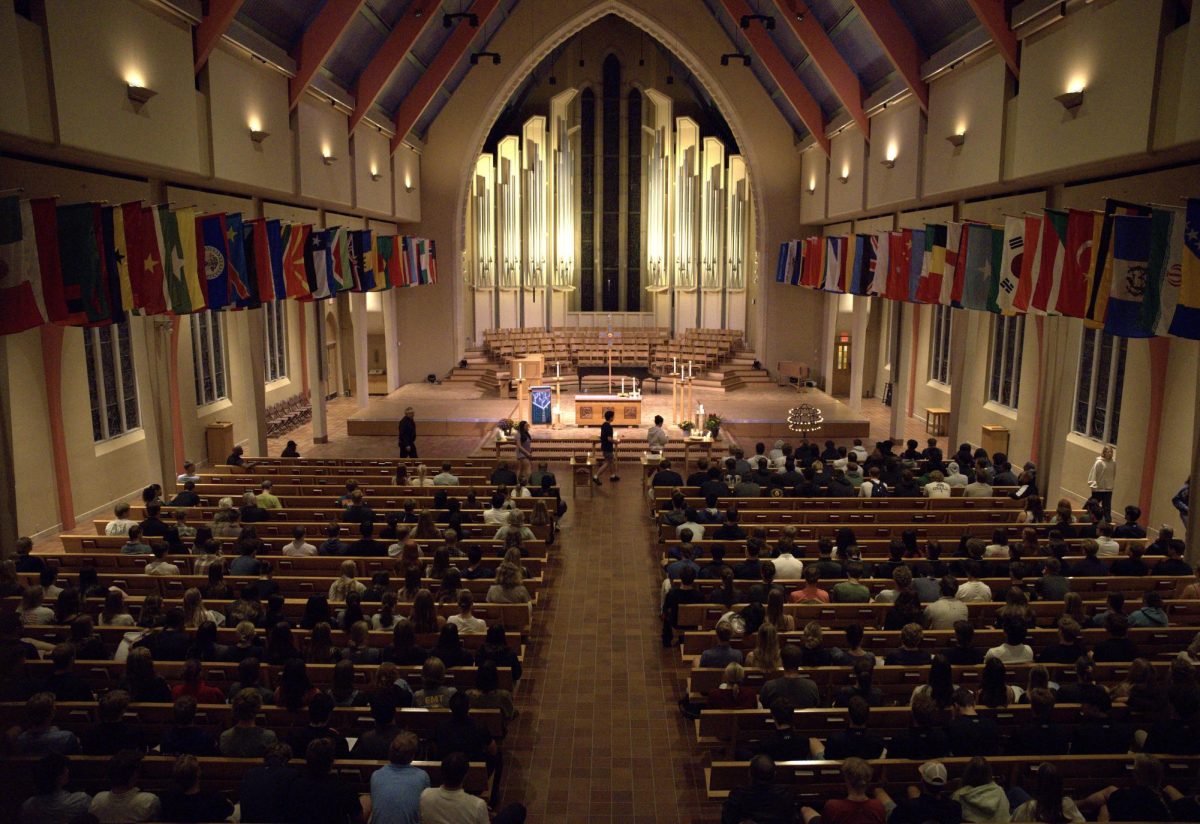Anyone who has attended a Student Government Association SGA Senate meeting to present, speak during the student comment period or just listen knows that Senate meetings consist of about 30 student senators sitting around an imposing table in Buntrock Common’s third-floor board room. But not all of Senate’s work is addressed in its large group meetings; much takes place in smaller subcommittees.
Senate subcommittees are “a way for specific student issues to get a more in-depth time of exploration,” said Matt Alveshere ’13, SGA vice president and Senate chair.
The number of subcommittees changes every year according to differing needs. According to Alveshere, he and SGA President Catherine Haines ’13 decided on what subcommittees to create based on what SGA has done in the past and what issues have been left unresolved in previous years. Alveshere also gathered input on issues that mattered to students while they were campaigning for office last spring. The Student Feedback and Involvement Committee, for example, was born out of Alveshere and Haines’ sense that students didn’t really know much about SGA and didn’t feel involved. The new committee seeks to resolve that issue.
This year, Senate has six subcommittees and also sends a liaison to the St. Olaf Safety Committee, a campus-wide body that looks at issues of safety on campus.
Senate’s subcommittees this year include the Bylaws Committee, the Student Work Committee, the Transportation and Parking Committee, the Student Wellness Committee and the Internal Affairs Committee.
Though the size of committees varies, each has about five senators on it, according to Alveshere. Senators are required to sit on one committee.
Alveshere and Haines gave the subcommittees their general topics and some initial goals, but left most of the work to the individual subcommittees. Alveshere expects that subcommittees will have spent first semester researching their topics – sending out surveys, talking with administrators and students, etc. – and that they will spend second semester implementing their ideas.
“Eighty percent of Senate is new [this year] and don’t have any experience in what subcommittees in the past have done,” Alveshere said. That’s why it takes a whole semester just for senators to get up to speed on where their topic is at.
Ytterboe Senator Christina Espey-Sundt ’13, chair of the Student Wellness Committee, appreciates the subcommittee format.
“That’s where a lot of the work of Senate gets done,” she said. Espey-Sundt likes the smaller format because it gives senators a chance to hear everyone’s ideas and fosters small-group discussion better than when the full Senate meets.
Espey-Sundt’s Student Wellness Committee is focusing mainly on issues of student stress this year, though issues of drug and alcohol use also fall under the group’s purview. According to Espey-Sundt, the subcommittee has been in conversation with the Wellness Center and other organizations on campus to get a better sense of what services are there for students dealing with stress, how much they are utilized and where SGA can lend its support.
Espey-Sundt said that for her, the goal of the Student Wellness Committee is to get a campus dialogue started on stress and hopefully to “make some small changes that might impact a sizable portion of the student body.”
SGA Senate’s many subcommittees show a renewed effort to work on issues that matter to students, like the parking policy and student work, as well as to make Senate itself more accessible to students. Look for the subcommittees’ work to come to fruition second semester.


